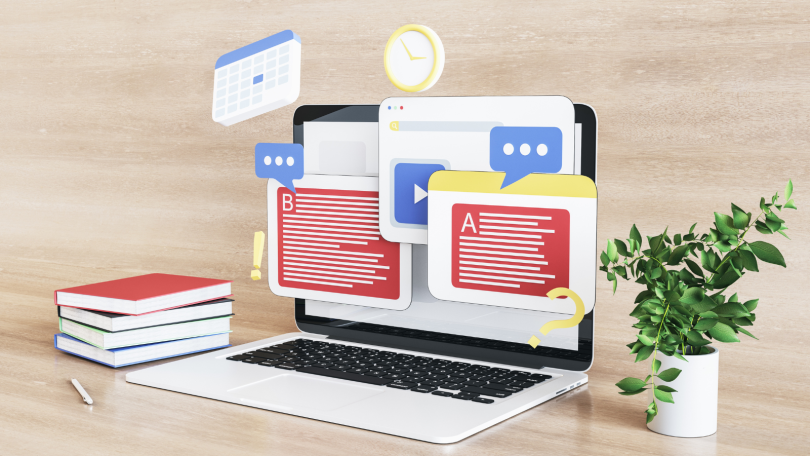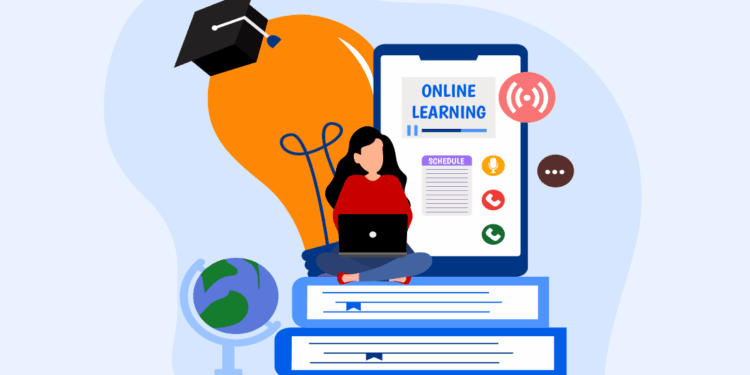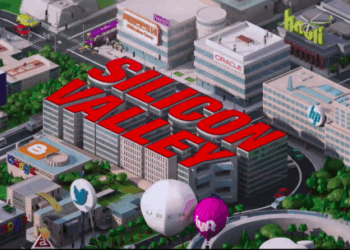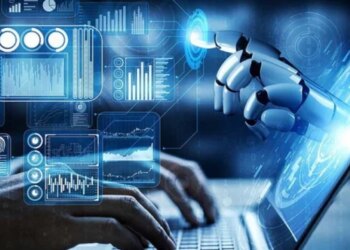The landscape of education is undergoing a profound and rapid transformation, moving far beyond traditional blackboards and textbooks. At the forefront of this revolution is EdTech, a dynamic field where technology, particularly smart learning tools, is reshaping how we teach, learn, and assess knowledge. Powered by advancements in Artificial Intelligence (AI), data analytics, and pervasive connectivity, these intelligent tools are creating personalized, engaging, and highly efficient learning experiences for students of all ages and backgrounds. This comprehensive article delves into the intricate world of EdTech’s smart learning tools, dissecting their core technological components, the profound benefits they deliver, the significant challenges they face, and the exciting future they promise for global education.
Unpacking “Smart” in Educational Technology

“Smart” in the context of EdTech refers to tools that are not merely digital versions of old resources but actively adapt, personalize, and optimize the learning process through intelligent capabilities. It’s about moving from one-size-fits-all instruction to highly individualized educational journeys.
A. Artificial Intelligence (AI) and Machine Learning (ML): These are the brains behind smart learning tools, enabling adaptation and personalization.
- Personalized Learning Paths: AI algorithms analyze a student’s performance, learning style, and pace to create customized curricula, recommending resources, exercises, and remediation tailored to individual needs.
- Adaptive Assessment: AI-powered systems can dynamically adjust the difficulty of questions in real-time based on a student’s responses, providing more accurate assessments of understanding and identifying areas for improvement.
- Intelligent Tutoring Systems (ITS): AI tutors provide one-on-one, on-demand support, offering explanations, hints, and feedback similar to a human tutor.
- Content Curation: AI can sift through vast amounts of educational content to recommend relevant materials to students or teachers based on specific learning objectives.
B. Data Analytics and Learning Analytics: Collecting and interpreting data is crucial for understanding learning patterns and improving outcomes.
- Performance Tracking: Platforms gather data on student engagement, completion rates, scores, and time spent on tasks.
- Predictive Analytics: AI can use historical data to predict which students might struggle, allowing for early intervention.
- Behavioral Insights: Analyzing how students interact with content can reveal their preferred learning modalities or areas of frustration.
- Curriculum Optimization: Aggregated data helps educators identify effective teaching strategies and areas where the curriculum might need adjustment.
C. Gamification and Immersive Technologies: Engaging students is key, and smart tools leverage immersive experiences.
- Interactive Learning Platforms: Use game-like elements (points, badges, leaderboards) to motivate students and make learning fun.
- Virtual Reality (VR) and Augmented Reality (AR): Create immersive learning environments. VR can transport students to historical events or inside the human body, while AR overlays digital information onto the real world (e.g., viewing 3D models of complex molecules).
- Simulations: Provide safe, virtual environments for hands-on learning in fields like science, engineering, or even surgical training, reducing risk and cost.
D. Natural Language Processing (NLP) and Speech Recognition: Enabling more intuitive interaction and assessment.
- Voice-Activated Learning: Students can interact with learning platforms using voice commands, making learning more accessible and natural.
- Automated Essay Scoring: NLP can analyze and score written assignments, providing quick feedback to students and reducing grading burden on teachers.
- Language Learning Tools: AI-powered apps use speech recognition to provide real-time pronunciation feedback and conversational practice.
E. Connectivity and Cloud Computing: The backbone for delivering powerful, accessible EdTech solutions.
- Online Learning Platforms (LMS): Learning Management Systems host courses, resources, and communication tools, enabling remote and blended learning.
- Cloud-Based Resources: Allow students and teachers to access learning materials, submit assignments, and collaborate from any device, anywhere.
- Scalability: Cloud infrastructure allows EdTech solutions to scale rapidly to accommodate millions of users globally.
Core Applications of Smart Learning Tools
The integration of smart tools is transforming various facets of the educational ecosystem, from personalized instruction to administrative efficiency.
Personalized Learning and Adaptive Tutoring
This is the holy grail of EdTech, moving away from “teaching to the middle.”
- Individualized Pace: Students can progress through content at their own speed, mastering concepts before moving on.
- Targeted Remediation: When a student struggles, the system identifies the specific knowledge gap and provides targeted practice or alternative explanations.
- Differentiated Instruction: Teachers can provide varied learning experiences to meet the diverse needs of students within a single classroom.
- AI-Driven Recommendation Engines: Similar to streaming services, AI recommends relevant learning content, articles, or videos based on a student’s interests and learning history.
Automated Assessment and Feedback
AI significantly streamlines the assessment process, offering immediate, actionable insights.
- Instant Grading: Automated grading of quizzes, multiple-choice questions, and even some forms of essays or coding assignments.
- Formative Feedback: AI provides immediate, constructive feedback to students on their work, helping them understand mistakes and improve in real-time.
- Plagiarism Detection: AI tools can quickly and accurately detect instances of plagiarism in written assignments.
- Skill Gap Analysis: Analytics identify specific skills or concepts where students (or a class as a whole) are struggling, informing teaching adjustments.
Content Creation and Curation
Smart tools assist educators in developing and delivering engaging content.
- AI-Assisted Content Generation: AI can help generate quiz questions, summaries, or even initial drafts of explanatory texts based on learning objectives.
- Interactive Simulations and Virtual Labs: Platforms provide realistic, hands-on learning experiences for subjects like science, engineering, or vocational training without the need for expensive physical equipment.
- Curated Learning Pathways: AI helps teachers organize existing online resources into coherent, personalized learning paths for students.
- Accessibility Features: AI-powered tools can automatically generate captions, translate content, or convert text to speech, making learning materials accessible to students with diverse needs.
Collaborative Learning and Communication
Smart tools enhance interaction between students and teachers, regardless of location.
- Virtual Classrooms: Video conferencing platforms integrated with interactive whiteboards, screen sharing, and breakout rooms facilitate live online instruction.
- Collaborative Document Editing: Tools allow multiple students to work on projects simultaneously, fostering teamwork.
- AI-Powered Discussion Forums: AI can monitor forum discussions, identify common questions, summarize key points, or even flag potentially inappropriate content.
- Automated Communication: AI can help teachers send personalized reminders to students or parents about upcoming assignments or performance.
Administrative Efficiency
Beyond the classroom, EdTech streamlines school operations.
- Automated Scheduling: AI can optimize class schedules, room assignments, and teacher allocations based on various constraints and preferences.
- Student Information Systems (SIS): Centralized platforms manage student enrollment, grades, attendance, and demographic data.
- Resource Management: Tools for managing textbooks, library resources, and other educational materials efficiently.
- Predictive Enrollment and Budgeting: AI can help institutions forecast future enrollment trends, informing budgeting and staffing decisions.
The Transformative Benefits of Smart Learning Tools

The adoption of smart learning tools is not just about leveraging technology; it’s about fundamentally improving the educational experience and outcomes for everyone involved.
A. Personalized and Adaptive Learning:
- Tailored Education: Learning paths are customized to each student’s unique needs, strengths, and weaknesses, leading to deeper understanding and better retention.
- Student-Paced Learning: Students can learn at their own speed, reducing frustration for slower learners and allowing advanced students to accelerate.
- Increased Engagement: Personalized content and interactive elements make learning more captivating and relevant, boosting student motivation.
B. Improved Learning Outcomes and Achievement:
- Targeted Support: AI identifies specific areas where students struggle, allowing for precise interventions and remediation.
- Instant Feedback: Immediate feedback on assignments helps students learn from their mistakes in real-time, accelerating the learning process.
- Deeper Understanding: Immersive experiences and adaptive content can lead to a more profound grasp of complex subjects.
C. Enhanced Efficiency for Educators:
- Reduced Administrative Burden: Automated grading, attendance tracking, and content curation free up teachers’ time from repetitive tasks.
- Data-Driven Insights: Teachers gain access to powerful analytics about student performance, allowing them to tailor their instruction more effectively.
- Professional Development: AI can suggest relevant professional development resources based on a teacher’s needs and student performance data.
D. Increased Accessibility and Inclusivity:
- Breaking Down Barriers: Online platforms and AI-powered translation/captioning tools make education more accessible to students with disabilities, those in remote areas, or non-native speakers.
- Flexible Learning Environments: Students can learn anytime, anywhere, accommodating diverse schedules and circumstances.
- Support for Diverse Learning Styles: Smart tools offer content in multiple formats (visual, auditory, interactive) to cater to different learning preferences.
E. Cost-Effectiveness and Resource Optimization:
- Reduced Material Costs: Digital textbooks and online resources can be more affordable than physical materials.
- Scalable Solutions: EdTech platforms can accommodate large numbers of students without proportional increases in infrastructure costs.
- Optimized Teacher Time: By automating certain tasks, teachers can focus on higher-value activities like individualized mentoring and curriculum development.
F. Preparation for the Future Workforce:
- Digital Literacy: Students gain essential digital skills by interacting with EdTech tools, preparing them for a technology-driven world.
- Critical Thinking and Problem Solving: Many smart learning tools promote critical thinking and problem-solving through interactive challenges and simulations.
- Personalized Skill Development: EdTech can help identify and nurture individual talents, guiding students towards career paths aligned with their strengths.
Navigating the Challenges of Smart Learning Tools
Despite their transformative potential, the widespread and equitable adoption of smart learning tools faces several significant hurdles that require careful planning and collaborative solutions.
A. Digital Divide and Equity:
- Unequal Access: Many students, particularly in rural or low-income areas, lack reliable internet access, suitable devices (computers, tablets), or the necessary digital literacy skills. This can exacerbate existing educational inequalities.
- Infrastructure Requirements: Schools need robust Wi-Fi, adequate bandwidth, and sufficient charging infrastructure to support widespread EdTech use.
- Affordability: The cost of subscriptions, devices, and professional development can be a barrier for institutions and families.
B. Data Privacy and Security Concerns:
- Student Data Protection: EdTech platforms collect vast amounts of sensitive student data (academic performance, behavioral patterns, personal information). Ensuring the privacy and security of this data is paramount, especially regarding compliance with regulations like FERPA or GDPR.
- Cybersecurity Risks: Learning platforms can be targets for cyberattacks, leading to data breaches, disruption of learning, or even ransomware.
- Parental Consent: Navigating the complexities of parental consent for data collection, especially for minors, is crucial.
C. Teacher Training and Adoption:
- Lack of Digital Skills: Many educators may not be adequately trained to effectively integrate and leverage smart learning tools in their pedagogy.
- Resistance to Change: Some teachers may be hesitant to adopt new technologies, preferring traditional methods or feeling overwhelmed by the rapid pace of technological change.
- Time and Resources: Providing sufficient time and resources for ongoing professional development and technical support is critical for successful implementation.
D. Quality Control and Efficacy:
- “EdTech Hype”: The market is flooded with numerous EdTech products, many of which lack robust pedagogical backing or evidence of efficacy.
- Integration Challenges: Different platforms and tools may not integrate seamlessly, creating fragmented learning experiences and administrative burdens.
- Learning Outcomes Measurement: Accurately measuring the impact of EdTech on learning outcomes can be complex and requires sophisticated research.
E. Ethical Considerations of AI in Education:
- Algorithmic Bias: If AI algorithms are trained on biased data, they could inadvertently perpetuate stereotypes or disadvantage certain student groups in terms of content recommendations or assessment.
- Over-reliance and Deskilling: Over-reliance on AI for assessment or content creation could potentially diminish critical thinking skills in students or reduce the pedagogical role of teachers.
- Data Exploitation: Concerns about how student data might be used by companies for commercial purposes or to influence educational choices.
F. Engagement vs. Screen Time:
- Digital Distraction: While engaging, excessive screen time and the potential for digital distractions can be a concern for student well-being and focus.
- Balancing Approaches: Finding the right balance between digital learning and traditional, hands-on, or social learning methods is crucial.
G. Content and Curriculum Alignment:
- Curriculum Fit: Ensuring that EdTech tools and content align with national, regional, or institutional curriculum standards can be challenging.
- Localization: Adapting content and interfaces to be culturally and linguistically appropriate for diverse student populations.
The Future Trajectory of Smart Learning Tools
The evolution of smart learning tools is poised to fundamentally redefine education, making it more personalized, accessible, and globally interconnected.
A. Hyper-Personalized Adaptive Learning Ecosystems: Future EdTech will move beyond individual adaptive tools to create comprehensive learning ecosystems that dynamically adjust every aspect of the learning journey – from content delivery to assessment and peer collaboration – based on real-time cognitive and emotional states, perhaps even integrating biometric data.
B. AI as a Universal Learning Companion: AI tutors will become even more sophisticated, capable of understanding complex questions, engaging in natural language conversations, and providing empathetic support, acting as ever-present learning companions for every student.
C. Immersive and Experiential Learning Dominance: VR, AR, and mixed reality (MR) will become standard tools for highly engaging and hands-on learning, allowing students to conduct virtual experiments, explore historical sites, or even practice complex surgical procedures in highly realistic simulations.
D. Blockchain for Secure Credentials and Lifelong Learning: Blockchain technology will be used to create secure, verifiable digital credentials and transcripts, enabling lifelong learning pathways and making it easier for individuals to demonstrate skills and qualifications across different institutions and careers.
E. Seamless Integration with Smart Environments: Learning will extend beyond devices, with smart classrooms and environments leveraging IoT sensors and AI to optimize physical spaces for learning (e.g., adaptive lighting, noise reduction) and provide context-aware learning prompts.
F. Ethical AI and Human-Centric Design: As AI becomes more powerful, there will be an increased focus on developing ethical AI frameworks within EdTech, ensuring transparency, fairness, and a human-centric approach that augments rather than replaces the vital role of teachers.
G. Globalized Learning Communities: Smart tools will increasingly facilitate truly global learning communities, connecting students and educators across borders for collaborative projects, cultural exchange, and diverse perspectives, fostering global citizenship.
Conclusion
The journey of EdTech is a testament to the transformative power of technology in unlocking human potential. By leveraging smart learning tools, we are not just digitizing education; we are fundamentally empowering a new generation of learners with personalized, engaging, and highly effective pathways to knowledge, ensuring a brighter, more informed future for all. The promise is clear: education will become more equitable, efficient, and ultimately, more profound, driven by the intelligent innovations of EdTech.












